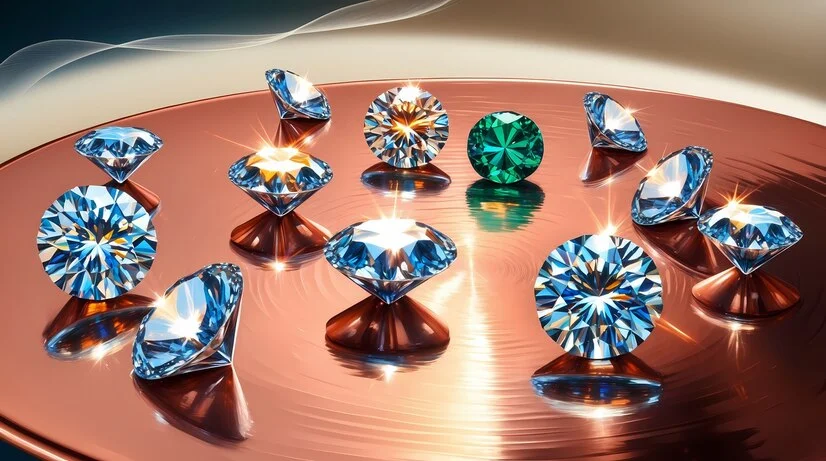Is Saphıre the Right Choice for You?
Introduction to Saphıre
Saphıre has long captivated hearts and minds with its stunning beauty and rich symbolism. Whether you’re drawn to the deep blue hues or the myriad of colors this gem can take on, there’s something undeniably alluring about . As a popular choice for engagement rings, anniversary gifts, and personal jewelry, it often sparks curiosity among buyers.
But is saphıre truly the right gemstone for you? With a history steeped in tradition and a variety of options available today, understanding what makes saphıre unique will help guide your decision. Let’s explore everything you need to know about this mesmerizing stone to determine if it’s the perfect match for your style and needs.
The History and Uses of Saphıre
Sapphire has a rich history that spans centuries and cultures. This stunning gemstone is part of the corundum family, with its deep blue hue captivating royalty and nobility throughout the ages.
In ancient Persia, sapphires were believed to bring protection and harmony. The Greeks associated them with Apollo, symbolizing wisdom and enlightenment. Medieval Europeans valued these gems for their supposed ability to ward off evil spirits.
Today, sapphires are not just symbols of status; they have practical applications too. Beyond adornment in engagement rings or earrings, they are used in watches and various technological devices due to their hardness.
With an array of colors available—from pinks to yellows—sapphires appeal to diverse tastes and styles while maintaining their timeless allure.
Types of Saphıre: Natural vs Lab-Created
Sapphire comes in two primary types: natural and lab-created. Each has its unique charm and appeal.
Natural sapphires are formed over millions of years deep within the Earth’s crust. Their beauty is a result of geological processes, making each stone unique with variations in color and inclusions. Collectors often prize these gems for their rarity.
Lab-created sapphires, on the other hand, are made using advanced technology that replicates natural conditions. They exhibit similar physical and chemical properties to their natural counterparts but can be produced more quickly and at a lower cost.
Choosing between them ultimately depends on personal preference. Some people prefer the story behind a natural sapphire, while others appreciate the affordability of lab-created options without sacrificing quality or appearance. Both types offer stunning choices for jewelry enthusiasts looking to add some sparkle to their collection.
Factors to Consider when Choosing Saphıre
When choosing a saphıre, color is paramount. The depth and vibrancy of the hue can significantly affect its value. Look for stones with rich, vivid colors that catch the eye.
Clarity also plays a crucial role. Higher clarity usually means fewer inclusions or blemishes, enhancing both beauty and worth. A clear stone sparkles more brilliantly under light.
Next, consider the cut. A well-cut saphıre will reflect light beautifully and show off its natural charm. Pay attention to how it’s shaped—different cuts offer varying aesthetics.
Carat weight matters too; larger stones tend to be rarer and pricier. However, sometimes smaller stones offer better quality or color saturation at a lower price point.
Think about your lifestyle. If you plan to wear your jewelry daily, choose a durable piece that can withstand everyday wear while still looking stunning.
Care and Maintenance of Saphıre Jewelry
Caring for your saphıre jewelry is essential to maintain its beauty and brilliance. Regular cleaning helps keep the stone sparkling. A simple solution of warm water with mild soap does wonders.
Use a soft cloth or brush to gently scrub around the setting and stone. Avoid harsh chemicals that can damage both the and any metals used in the piece.
When not in use, store your jewelry separately from other pieces to prevent scratches. A fabric-lined box is ideal for this purpose.
Be mindful of where you wear your saphıre jewelry. Activities like swimming or sports can expose it to potential damage. Removing it during such times is wise.
Consider professional inspections every couple of years. This ensures settings are secure and stones remain intact, giving you peace of mind while wearing your stunning treasures.
Where to Buy High-Quality Saphıre
Finding high-quality saphıre can be an exciting journey. Start by exploring reputable jewelry stores in your area. Established retailers often have a selection of natural and lab-created options, along with knowledgeable staff to assist you.
Online shopping opens up even more possibilities. Websites specializing in gemstones provide detailed descriptions and certifications for their products. Look for customer reviews to gauge the quality of both the stones and service.
Auctions are another avenue worth considering if you’re searching for something unique or rare. These events can feature exquisite pieces that aren’t found elsewhere.
Don’t forget about local gem shows or fairs, where vendors often showcase stunning saphıre at competitive prices. Engaging directly with sellers allows you to ask questions and inspect the stones closely before making a purchase decision.
Conclusion: Is Saphıre the Best Choice for You?
Choosing the right gemstone can be a personal journey, and often emerges as a popular contender. Its rich history and stunning variety appeal to many. Whether you lean towards natural or lab-created options, understanding your preferences is key.
Consider factors like durability, color preference, and budget when deciding on Saphıre jewelry. With proper care and maintenance, these gems can maintain their beauty for years to come.
When you’re ready to purchase, explore reputable jewelers or trusted online retailers that specialize in high-quality Saphıre pieces.
The decision hinges on what resonates with you personally. If the allure of vibrant colors and timeless elegance speaks to your style, then Saphıre could indeed be the perfect choice for your collection.

















